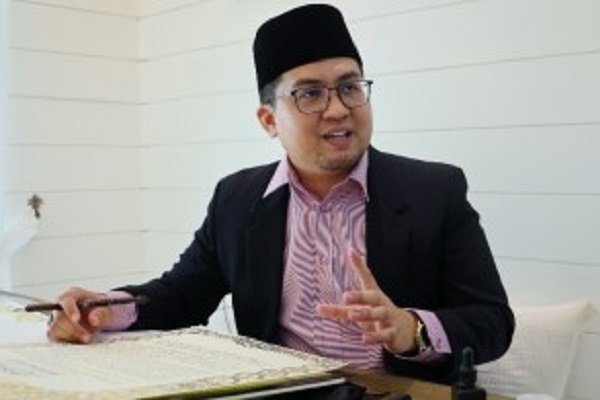Calligraphy in the Digital Age: Challenges and Hopes from Malaysian Calligrapher

Starting his journey in high school, Khairi Izat, now 31, competed in local and national calligraphy competitions before expanding his knowledge overseas.
Reflecting on his journey, he explained, “Becoming a calligrapher is not an easy task; it took me years to master.” He studied extensively, training in styles like Thuluth and Nasakh in Turkey's IRCICA Research Centre for Islamic History, Arts, and Culture, Bernama reported on Tuesday.
Throughout his career, Khairi Izat has focused on the art’s technical precision and spiritual resonance, observing that calligraphy demands both dexterity and a keen eye to produce harmonious and meaningful works.
Using traditional bamboo and wood pens, he emphasizes that each piece requires patience and skill.
“The techniques for writing calligraphy must be learned because each piece has its own continuity, delicacy, and harmony,” he said.
Read More:
His expertise has also led to notable commissions, including crafting text for the installation ceremony of Malaysia’s King last July.
Calligraphy, or “khat,” holds a revered place within Islamic culture, used for Quranic verses, mosque decorations, and personal artworks. Khairi Izat points out that while Malaysia has a rich tradition in calligraphy, modern technology often draws younger generations away from traditional arts.
In today’s era, gadgets are replacing paper and pens, impacting the traditional tools essential for learning calligraphy, he said, adding that structured programs are needed to cultivate talent.
Another young calligrapher, Ammar Yahaya, working at the Nasyrul Quran Complex in Putrajaya, expressed a similar view, stressing the need for platforms that support consistent practice. Many school students show interest, but few have the perseverance to keep learning, he said, adding that structured curricula are essential to develop quality calligraphers.
Watch:
Both Khairi Izat and Ammar see potential in Malaysia’s calligraphy scene, with a growing interest in calligraphy for commercial decor and architecture.
Khairi Izat remains optimistic about the art’s future, crediting increased interest from the public and ongoing efforts by local artists to sustain this traditional craft.
Source: Agencies



